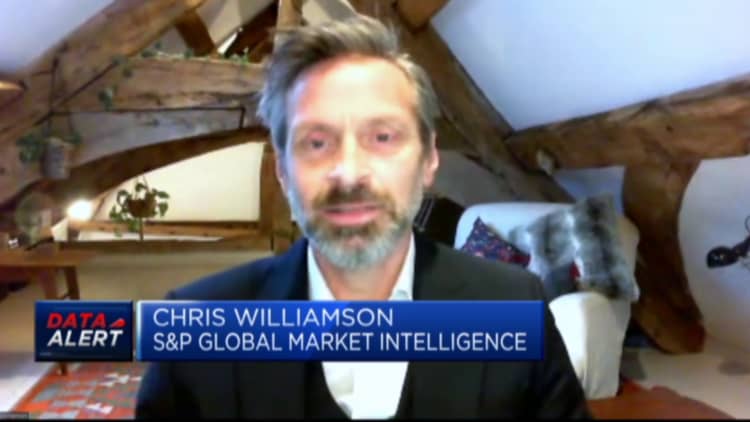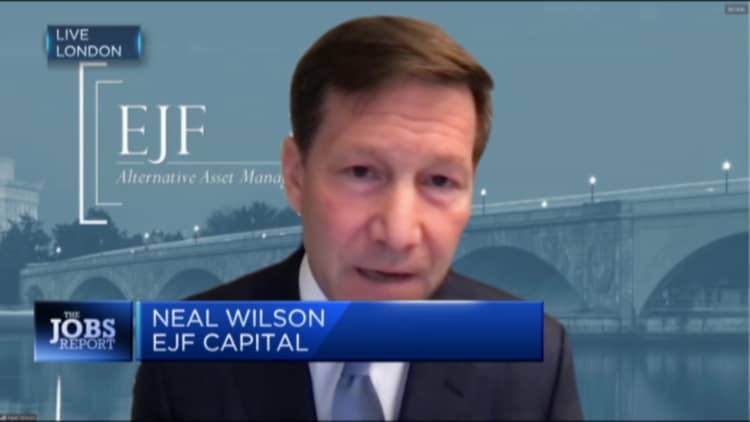As markets head into a year of uncertainty against a backdrop of shifting economic data and monetary policy, analysts are turning positive on the outlook for the euro.
Having fallen below parity with the U.S. dollar in the second half of 2022, the common currency recovered in recent months to trade within a tight range at just above $1.07 on Wednesday morning.
Central to the euro's weakness last year was aggressive monetary policy tightening from the U.S. Federal Reserve while the European Central Bank was much later out of the blocks in hiking interest rates to contain runaway inflation.
However, incoming data trends suggest a need for continued hawkishness in Frankfurt and a potential cooling of rate hikes in Washington, several analysts highlighted this week. This closing of the interest rate gap would be positive for the euro.
The economic threat posed by sky-high energy prices in the euro zone has also faded amid an unseasonably mild winter in much of northern Europe.
"The euro is trading within its late December range, but incoming data since the beginning of 2023 suggest to us that it should be stronger," Steve Englander, head of global G-10 FX research at Standard Chartered, said in a note Monday.
"Both euro area core inflation and economic surprises have continued to strengthen, making it easier for the European Central Bank to maintain a hawkish tone. Energy concerns that loomed large as a EUR-negative in mid-2022 are beginning to ebb."

Euro zone annual headline inflation slid to 9.2% in December from 10.1% in November, Eurostat preliminary figures revealed last week. But core inflation, which excludes volatile energy, food, alcohol and tobacco prices, rose by more than expected to hit a new record high of 5.2%.
Both the ECB and the Fed have continued to strike a hawkish tone in recent weeks as they focus on dragging inflation back toward target. ECB policymaker Robert Holzmann told a conference on Wednesday that "policy interest rates will have to rise significantly further to reach levels that are sufficiently restrictive to ensure a timely return of inflation to the 2% medium-term target."
However, Englander pointed out that the data surprises in the U.S. have been "middling to weaker" than in Europe, indicating less upward pressure on rates.
He highlighted that the average hourly earnings (AHE) trend in the latest release was "far more benign" than those the Federal Open Market Committee (FOMC) was working with in mid-December, when 6-month annualized earnings growth through November was 5.3% and rising.

"The 6M annualised wage increase in December fell to 4.4% in the latest release. The December non-manufacturing ISM was the lowest since 2010, other than when COVID struck with all its force in 2020," Englander noted.
Fed Chairman Jerome Powell has repeatedly emphasized the importance of wages in bringing core services inflation down, pointing to wage growth as a risk factor in the Fed's mission to reduce it.
"If productivity growth trends have not changed since pre-Covid, this would leave AHE growth consistent with 3-3.5% underlying inflation," Englander said.
"This is not 2%, but wage growth consistent with 3-3.5% inflation is not an acute inflation problem, especially if the wage trend continues to head lower."
Reduced core services inflation would allow the Fed room to half its aggressive rate hiking cycle later in the year, and perhaps even begin to reverse it.
The 'Fed pivot'
This potential turning point for markets, widely referred to as the "Fed pivot," would be the "missing link" to catalyze a more robust upward trajectory for the euro, according to Deutsche Bank Head of FX Research George Saravelos.
The U.S. dollar "defied historical experience last year by overshooting relative to the prevailing growth, inflation and monetary policy mix," Saravelos said in a note Monday.
"With negative China and European drivers turning more supportive quicker than we anticipated a few months ago the risks are shifting towards an earlier dollar drop. We would buy EUR/USD targeting 1.10 by Q2 and move up our year-end forecast to 1.15," he said.
Saravelos agreed with Englander's assessment that the relative policy cycles in the U.S. and the euro zone point to the Fed pivoting before the ECB.
"In Europe, the latest PMI numbers show there may not even be a recession this winter, the unemployment rate is still declining and fiscal policy is structurally easy," he said.

"In contrast, the debt ceiling poses downside risks to U.S. fiscal policy this year, the market is already pricing the Fed's desired level of real rates, and U.S. labor tightness metrics (e.g. the vacancy rate) are turning faster than Europe."
What's more, after 2022's global uncertainty, markets are sitting on "extremely large USD cash exposure," Saravelos said. He suggested this could be vulnerable to further liquidation given that two of the main drivers of the greenback's safe-haven appeal last year — Europe's energy shock and China's zero-Covid policy — have turned a corner.
China's reopening in itself could also provide a boost to the euro, he argued, since it is a pro-cyclical currency and "turning points over the last decade have coincided with a turn in the external growth cycle."
"Tight central bank policy is a big headwind to global growth, but China's shift away from zero-Covid policy is a tailwind, while also helping prevent upside pressure on the broad dollar via USDCNY (U.S. dollar versus Chinese yuan)."

